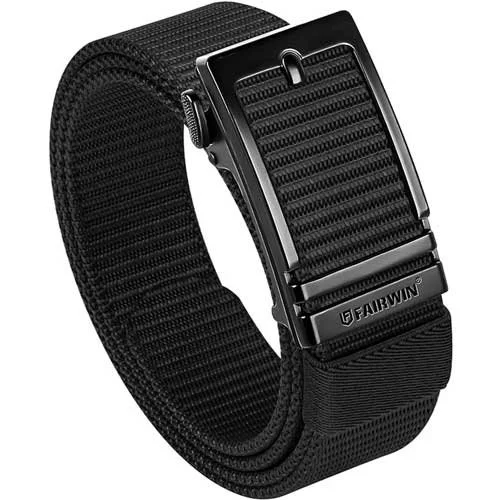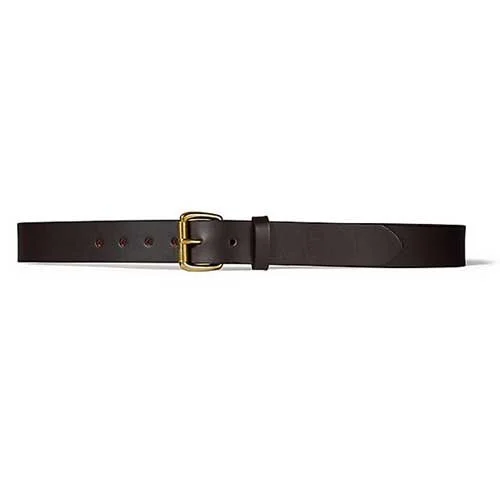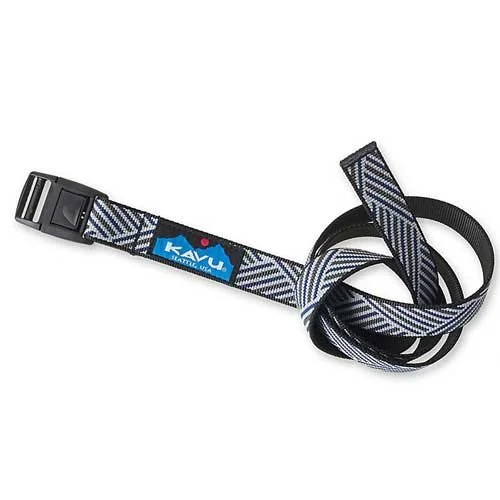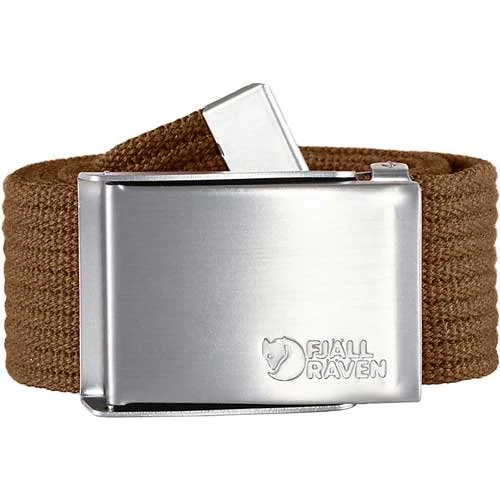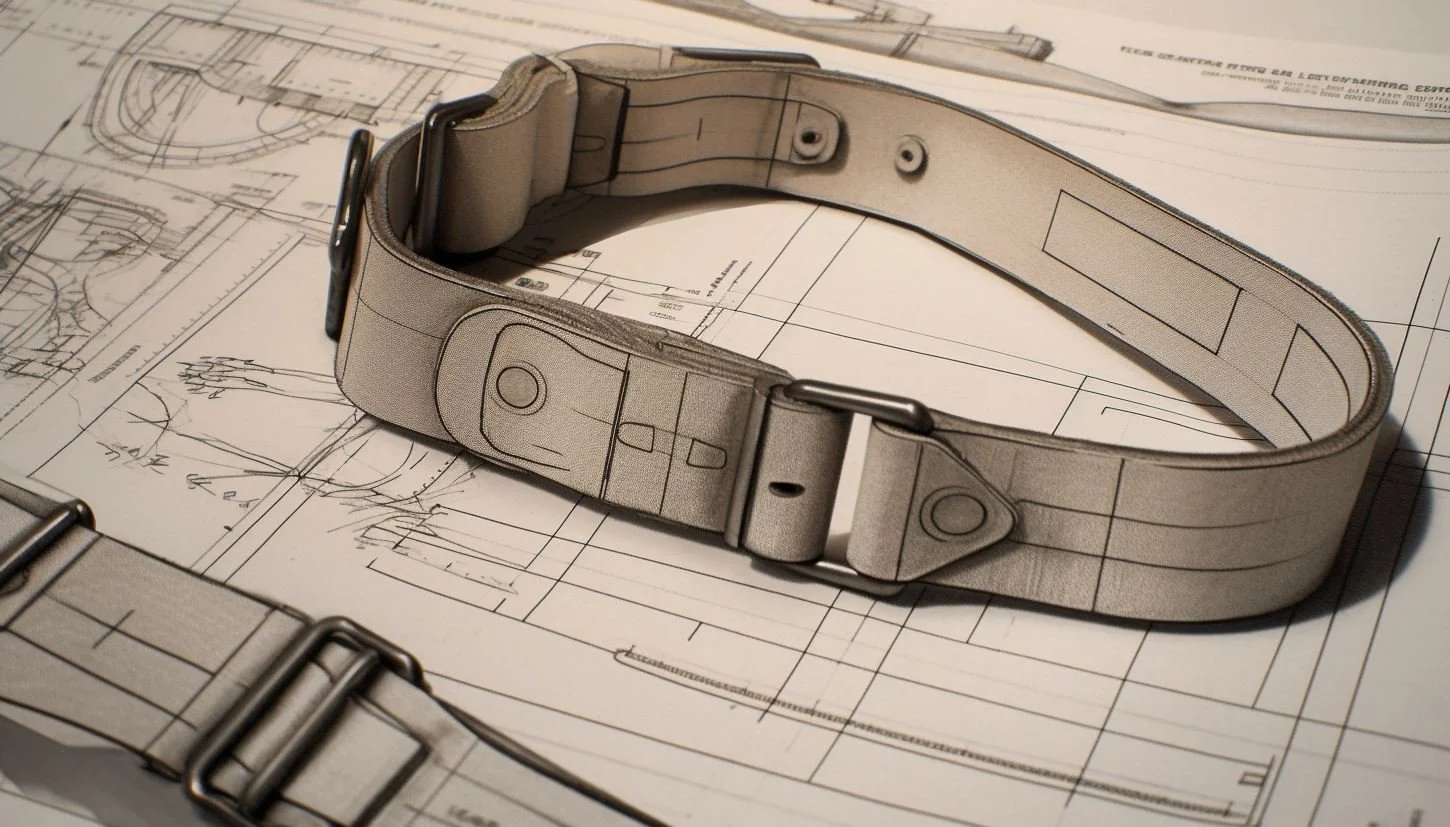Best Hiking Belt
Elevate Your Trek: A Comprehensive Guide to the Best Hiking Belts for Every Adventure
When it comes to hiking, every piece of gear serves a purpose, often more than one. Among these essential items, the hiking belt is an often-underestimated component that not only holds up your trousers but can also serve as a multifunctional tool that enhances your outdoor experience.
Whether you're scaling a challenging mountain trail or taking a leisurely stroll through wooded paths, the right hiking belt can make a significant difference in comfort, utility, and safety.
This article aims to be your definitive resource on hiking belts. We have meticulously selected six specific hiking belt recommendations tailored for various uses—from lightweight options suitable for day hikes to more robust belts designed for multi-day adventures.
Furthermore, we've included an exhaustive buyer's guide that delves deeply into the key factors you should consider when making a purchase. We cover aspects like material, buckle type, functionality, comfort, safety, sizing and fit, maintenance and care, and environmental considerations to help you make an informed decision.
With the multitude of options available on the market, choosing the right hiking belt can seem overwhelming. Our goal is to simplify this process by providing you with reliable information and actionable insights.
Armed with the knowledge from our buyer's guide and the specific recommendations that follow, you will be well-equipped to select a hiking belt that best suits your needs and preferences.
Disclaimer: This blog post contains affiliate links. If you make a purchase through one of these links, I may receive a small commission at no additional cost to you. This helps support my work and allows me to continue providing valuable content. Thank you for your support!
Best Hiking Belt
In this section, you'll find our carefully curated list of six hiking belt recommendations, each tailored for a specific use.
Whether you're a day-tripper or a seasoned trekker, our selections aim to provide you with the optimal balance of comfort, functionality, and durability for your particular hiking needs.
Ratchet Design
Fairwin Automatic Ratchet Belt
Amazon bestseller. Designed as a heavy-duty webbing belt with multifunctional use.
• 1.3 inches wide
• Automatically tightens as you pull slack through buckle
• 11 color options
Quick Release Buckle
Mammut Alpine Belt
The epitome of lightweight durability for hikers. Flat and light plastic buckle adds minimal weight to your gear.
• 1.5 inches wide
• One size fits all with infinitely adjustable size
• 2 color options
Classic Leather
Filson 1 1/4” Leather Belt
Crafted in the USA with North American leather, this belt is an investment in quality and longevity for the serious hiker.
• 1.25 inches wide
• Rustproof metal roller buckle
• 3 color options
Ultralight
KAVU Burly Belt
The lightest belt on the market at just 1.3 ounces. Durable enough to be backed by a lifetime warranty.
• 1 inch wide
• USA made with Lifetime Warranty
• 5 color options
Performance Stretch
Arcade Atlas Belt
This belt offers performance stretch that allows for greater freedom of movement during your outdoor adventures.
• 1.5 inches wide
• Micro-adjustable buckle dials in your exact fit
• 24 color options
Canvas Belt
Fjallraven Canvas Belt
Crafted for hikers who demand long-lasting quality, this belt is designed to last a lifetime.
• 1.5 inches wide
• Simple metal buckle with Fjallraven name and fox logo
• 9 color options
Buyer’s Guide
Selecting the right belt for hiking involves various factors that go beyond aesthetic appeal.
A well-chosen hiking belt can offer significant benefits such as support, functionality, and ease of movement, while the wrong belt can lead to discomfort or even potential safety issues.
This guide aims to offer a comprehensive understanding of the key attributes to look for when purchasing a hiking belt.
Material
Nylon Webbing
Durability: High-strength and resistant to wear and tear.
Flexibility: Offers some stretch for comfort but retains form.
Water Resistance: High resistance to water absorption.
Weight: Generally lightweight.
Polyester
Durability: Less durable than nylon but still strong.
Flexibility: Less stretchy than nylon.
Water Resistance: Resistant to water and quick-drying.
Weight: Comparable to nylon.
Leather
Durability: Highly durable but may require more maintenance.
Flexibility: Minimal stretch; may become suppler over time.
Water Resistance: Low; susceptible to water damage unless treated.
Weight: Heavier than nylon and polyester.
Cotton
Durability: Lower durability; susceptible to fraying and tearing.
Flexibility: Highly flexible but may lose form over time.
Water Resistance: Poor; absorbs moisture.
Weight: Light to moderate depending on thickness.
-
When it comes to hiking belts, material is one of the most critical factors that can significantly affect performance, durability, and comfort.
Understanding the intricacies of different materials can help you make an informed decision, tailored to your specific hiking needs.
This guide delves into an exhaustive analysis of the types of materials commonly used in hiking belts, evaluating them based on several criteria including durability, water resistance, weight, and maintenance requirements.
Types of Materials
Nylon Webbing
Durability: Nylon is known for its high tensile strength, making it resistant to wear and tear even under strenuous conditions. This material tends to be exceptionally durable, which makes it suitable for long hikes or carrying additional gear.
Flexibility: Nylon offers a good degree of stretch, which adds to its comfort. However, the stretch is controlled enough to maintain the belt's shape and support.
Water Resistance: One of the key advantages of nylon is its inherent water resistance. Unlike some other materials, nylon does not absorb water, which is crucial for hiking in wet conditions.
Weight: Generally lightweight, nylon is ideal for long hikes where reducing overall gear weight is a priority.
Maintenance: Nylon is relatively easy to clean and does not require specialized care. Most nylon belts can be machine-washed, although it's advisable to consult manufacturer guidelines.
Polyester
Durability: While not as strong as nylon, polyester still offers a decent level of durability. It resists abrasion to a certain extent but may not be the best for carrying heavy loads.
Flexibility: Polyester is generally less stretchy than nylon, which can be a positive or negative trait depending on your specific needs for support and comfort.
Water Resistance: Polyester is also water-resistant and tends to dry quickly, which makes it another good option for hiking in diverse weather conditions.
Weight: The weight of polyester belts is roughly comparable to those made from nylon, making it another lightweight option.
Maintenance: Like nylon, polyester is generally easy to maintain and can often be machine-washed, but always refer to the manufacturer's care guidelines.
Leather
Durability: Leather is incredibly durable and can last for years if properly maintained. It is highly resistant to wear and tear but may not be the best for damp conditions unless treated.
Flexibility: Leather belts offer minimal stretch. Over time, however, the material may soften, becoming more comfortable but potentially less supportive.
Water Resistance: Leather requires special treatment to become water-resistant. If exposed to moisture without proper treatment, it can become stiff or even deteriorate.
Weight: Leather belts are generally heavier than their nylon and polyester counterparts, which could be a factor for those keen on minimizing weight.
Maintenance: Leather requires more extensive care, including periodic conditioning to maintain its quality. It is not machine-washable and usually needs to be cleaned with specialized products.
Cotton
Durability: Cotton is the least durable among the commonly used materials for hiking belts. It is susceptible to fraying, tearing, and general wear and tear.
Flexibility: Cotton is extremely flexible and soft, which can make it comfortable but less supportive compared to other materials.
Water Resistance: Cotton absorbs water and can become heavy and uncomfortable when wet, making it less than ideal for hiking in wet conditions.
Weight: Depending on the weave and thickness, cotton can be light to moderately heavy.
Maintenance: Cotton is generally easy to clean but may shrink or lose its shape over time, especially if machine-washed in hot water.
Technical Specifications
Tensile Strength: The tensile strength of a material indicates how much load it can bear without breaking. Higher tensile strength equates to a more durable belt, especially important for those who plan to use it for carrying additional gear.
Elasticity: The elastic nature of a material can affect its comfort and support. Too much elasticity can compromise the belt's ability to hold up trousers or attached gear effectively.
Abrasion Resistance: This measures how well the material can withstand surface wear. For hiking, high abrasion resistance is crucial due to the potential for frequent contact with rough surfaces.
UV Resistance: Exposure to sunlight can degrade some materials faster than others. UV resistance is a key factor for longevity if you'll be hiking in sunny conditions.
Hydrophobic vs. Hydrophilic Properties: Some materials inherently repel water (hydrophobic) while others absorb it (hydrophilic). Knowing this property can help you decide on the best material based on the weather conditions you'll face.
Buckle Type
Traditional Buckle
Ease of Use: Familiar and straightforward but may require two hands.
Adjustability: Offers precise fit but may need frequent readjusting.
Durability: Dependent on material; metal is generally more durable than plastic.
Quick-Release Buckle
Ease of Use: Easy one-handed operation.
Adjustability: Simple to adjust but may have limited sizing increments.
Durability: Usually made of high-strength plastic or metal; durability varies.
Slide Buckle
Ease of Use: Simple slide mechanism usually requiring two hands.
Adjustability: Highly adjustable with continuous sizing options.
Durability: Generally durable depending on material.
-
The buckle is more than just a fastening mechanism when it comes to hiking belts; it plays a crucial role in the belt's functionality, ease of use, and durability.
The right type of buckle can enhance your hiking experience by providing quick adjustability, secure fastening, and long-term durability.
This comprehensive guide will focus on the different types of buckles commonly seen in hiking belts, assessing them based on criteria such as ease of use, adjustability, and durability.
Types of Buckles
Traditional Buckle
Ease of Use: Traditional buckles are straightforward and easy to use for most people as they are widely used in various types of belts. However, they usually require two hands to fasten or unfasten and may require some fiddling to get the prong into the right hole.
Adjustability: Traditional buckles provide a high level of adjustability as you can choose from multiple holes. However, you may find yourself in between hole sizes, requiring new holes to be made for a precise fit.
Durability: The durability of a traditional buckle is generally determined by its material. Metal buckles, often made from stainless steel or brass, are usually more durable than plastic ones.
Security: The prong-and-hole mechanism generally offers a secure fit, but it is advisable to regularly check for wear in the holes to prevent unexpected loosening.
Quick-Release Buckle
Ease of Use: Quick-release buckles, often seen in military or tactical belts, offer one-handed operation. This can be particularly beneficial if you need to frequently unbuckle and buckle your belt.
Adjustability: While convenient, quick-release buckles may offer fewer options for precise adjustment. They often have pre-set positions that might not align perfectly with your preferred fit.
Durability: Quick-release buckles are typically made from high-strength materials like reinforced plastic or metal. However, the complexity of the mechanism may present more points of potential failure compared to simpler buckle types.
Security: The locking mechanism usually provides a secure fit, but it's essential to ensure that the buckle is fully engaged to prevent accidental release.
Slide Buckle
Ease of Use: Slide buckles operate through a friction-based mechanism where the belt is looped through the buckle and secured by tension. This usually requires two hands to adjust.
Adjustability: This type of buckle offers the highest degree of adjustability with continuous sizing options. However, the tension-based mechanism may require frequent readjustments to maintain a snug fit.
Durability: The durability of slide buckles is generally good, especially those made from high-quality metals. However, frequent adjustments can lead to faster wear and tear on the belt material itself.
Security: Slide buckles rely on tension to stay in place. While generally secure, significant movements or changes in tension can lead to loosening.
Technical Considerations
Material Compatibility: It's important to consider how well the buckle material complements the belt material. For example, a heavy metal buckle may not be suitable for a lightweight nylon belt and could cause it to sag.
Locking Mechanisms: Some buckles come with additional locking mechanisms to further secure the belt. This feature can be particularly useful for hiking activities that involve rigorous movement.
Ease of Repair: Simpler buckle mechanisms are generally easier to repair in the field. If you're planning an extended trip, this could be an important consideration.
Corrosion Resistance: If you'll be hiking in humid or salty conditions, consider a buckle made from corrosion-resistant materials like stainless steel or high-quality plastic.
Load-Bearing Capacity: If you plan to use your belt for carrying additional gear, it's crucial to consider the buckle's load-bearing capacity. Ensure it is designed to handle the extra weight without breaking or disengaging.
Cold Weather Performance: Some buckle types may be difficult to operate with gloves on or may not function optimally in freezing conditions. If you plan to hike in cold weather, consider a buckle that can be easily operated while wearing gloves and that won't jam or fail in low temperatures.
Weight: The buckle's weight contributes to the overall weight of the belt. For long hikes or when every ounce counts, a lightweight buckle may be preferable.
Functionality
Gear Loops
Allows for the attachment of lightweight gear such as carabiners or a water bottle.
Built-In Tools
Some belts come with integrated tools like a knife, compass, or whistle for emergency situations.
Adjustable Width
Belts with varying widths offer better support and can be adjusted for different activities.
-
In the context of hiking belts, functionality transcends the basic utility of holding up your trousers. A hiking belt can serve multiple roles, from providing lumbar support to offering storage options and even serving as an emergency tool.
When choosing a hiking belt, understanding the functionality aspects can help you align your selection with your specific needs, whether you are an occasional hiker or a seasoned outdoor adventurer.
This guide delves into various functional elements commonly found in hiking belts, such as adjustability, storage options, and specialized features.
Core Functional Elements
Adjustability
Importance: A highly adjustable belt allows you to achieve a snug fit, which is essential for comfort and to ensure the belt stays in place during physical activity.
Options: Look for belts with a high level of adjustability, either through multiple holes in traditional buckles, slide buckles for continuous adjustment, or quick-release buckles for one-handed operation.
Impact on Load-Bearing: Higher adjustability usually provides better load-bearing capabilities, particularly useful if you plan to attach gear to your belt.
Comfort and Support
Importance: Lumbar support and overall comfort are paramount in a hiking belt, especially for long treks. A belt that provides good support can also help distribute the weight of your backpack more evenly.
Options: Padded belts or those with an ergonomic design often offer enhanced comfort and support. Material also plays a role; softer materials like cotton may offer more comfort but less support, while sturdier materials like nylon may offer better support.
Specialized Features
Importance: Depending on your hiking needs, you might require specialized features like reflective strips for visibility, or even built-in survival tools like a firestarter.
Options: Some belts come with integrated features like a hidden compartment for money or a small first-aid kit, a whistle, or a buckle that doubles as a bottle opener.
Utility: The more specialized features a belt has, the more versatile it becomes, but also consider the practicality and likelihood of needing these features to avoid unnecessary complexity and weight.
Technical Specifications
Weight Distribution: If you plan to use the belt for carrying additional gear, consider how well it distributes weight. An uneven weight distribution can lead to discomfort or even injury over time.
Ease of Use: How easy is it to buckle and unbuckle the belt, adjust its size, or access its storage compartments? Ease of use becomes particularly important in situations where quick adjustments are necessary.
Durability of Functional Components: Check the durability of zippers, loops, and other functional components. These are often the first to fail and can compromise the belt's overall functionality.
Compatibility with Other Gear: Consider how well the belt works with your other hiking gear. For instance, does it fit comfortably with your hiking pants, and is it compatible with your backpack’s waist strap?
Multi-Functionality: Some belts are designed to serve multiple functions, such as doubling as a tourniquet or tow strap in emergency situations. While these features may not be essential for every hiker, they could be beneficial for those who frequently embark on more challenging or remote trails.
Accessibility: If the belt has storage options, consider how easily you can access these while walking. Having to stop and remove your belt to access a pocket may not be practical in some situations.
Weather Resistance: The functionality of some belts may be affected by weather conditions. For example, belts with electronic components may not be water-resistant, and certain materials may become too stiff or too loose in extreme temperatures.
Comfort
Padding
Some belts come with padded sections to increase comfort against the skin or over clothing.
Breathability
Consider materials and designs that allow for air flow to reduce sweating and discomfort.
Stretch
A slight stretch in the belt material can add to comfort but should not compromise support.
-
Comfort is not merely an ancillary feature when it comes to hiking belts; it is a core requirement.
Even the most functionally robust belt can become a liability if it sacrifices comfort, particularly during long or arduous hikes.
Factors influencing comfort include the belt's material, width, adjustability, and design features specifically aimed at increasing comfort, such as padding or ventilation.
This guide will provide a detailed exploration of the various elements that contribute to a hiking belt's comfort, allowing you to make an informed decision based on your individual needs.
Core Components Influencing Comfort
Material
Importance: The type of material can significantly influence the belt's comfort level. Soft materials may offer immediate comfort, while stiffer materials may provide better support but might require a break-in period.
Options: Materials commonly used in hiking belts include nylon, polyester, leather, and cotton blends. Each has its pros and cons in terms of comfort, durability, and moisture-wicking properties.
Skin Sensitivity: For those with sensitive skin, hypoallergenic materials may be preferable. Avoid belts with materials that can cause irritation or chafing during prolonged use.
Width and Thickness
Importance: The width and thickness of the belt contribute to its ability to distribute weight evenly, which is especially critical if you attach gear to it or carry a heavy backpack.
Options: Wider belts generally offer better weight distribution, but they may also be less flexible and could interfere with the waist strap of a backpack. The thickness can also add to the belt's rigidity, impacting both support and comfort.
Body Type Considerations: Your body type and the kind of clothing you'll be wearing can also influence the optimal width and thickness for comfort.
Adjustability
Importance: A belt that is easily adjustable allows you to achieve the perfect fit, contributing to comfort. Too loose a fit may require frequent readjusting, while too tight a fit can cause discomfort or even lead to health issues.
Options: Belts with multiple adjustment points or continuous adjustment mechanisms offer greater flexibility for achieving a comfortable fit.
Ease of Adjustability: Consider how easily the belt can be adjusted. Some belts may require you to remove them for adjustment, while others can be adjusted on the go.
Padding and Supportive Features
Importance: Additional padding can provide enhanced comfort, especially during prolonged use or heavy load-carrying.
Options: Some belts come with integrated padding, lumbar support, or even gel-filled sections for added comfort. However, these features often add to the belt's weight and may affect breathability.
Balancing Factors: It’s essential to balance the need for extra padding with other considerations like ventilation, weight, and moisture-wicking capabilities.
Technical Considerations
Ventilation and Breathability: In hot or humid conditions, a belt that offers good ventilation can significantly enhance comfort. Look for belts with perforated material or moisture-wicking properties to keep you cool.
Moisture Management: Materials that wick moisture away from the skin can provide added comfort by keeping you dry, especially during strenuous hikes where sweating is inevitable.
Ease of Movement: The belt's flexibility can impact your range of motion. Too rigid a belt can constrain movement and cause discomfort, particularly during activities like climbing or scrambling.
Load-Bearing Comfort: If you plan to use the belt for carrying additional gear or supporting a heavy backpack, its ability to comfortably distribute weight becomes crucial. Padding and width are key factors here, but also consider the belt's compatibility with your backpack's design.
Seam Construction: Pay attention to the construction of the belt, particularly the seams. Poorly constructed or protruding seams can cause irritation or chafing during extended use.
Fastening Mechanism: The type of buckle can also impact comfort. While some may find traditional buckles more comfortable, others may prefer the ease of quick-release buckles. The flat profile of slide buckles can also offer a more comfortable fit for some users.
Weather Conditions: Your comfort level can be influenced by the specific weather conditions you'll be hiking in. In colder climates, for example, a wider, padded belt may provide additional insulation.
Safety
High-Visibility Elements
Reflective materials or colors help in low-light conditions.
Locking Mechanisms
Ensure that the buckle has a reliable locking mechanism to prevent accidental release.
Tensile Strength
Check the maximum load the belt can handle, especially if you plan to attach gear to it.
-
When considering a hiking belt, safety should be a priority.
While a hiking belt's primary function may be to secure your pants or carry small items, its design, material, and features can have direct implications for your safety on the trail.
From load-bearing capacity to quick-release mechanisms and even survival features, a hiking belt can serve as a multi-functional safety tool if chosen wisely.
This guide aims to delve into the various safety aspects to consider when selecting a hiking belt, providing you with comprehensive insights that will inform your choice.
Core Safety Components
Quick-Release Mechanism
Importance: In certain situations, quickly removing your belt can be critical for safety, such as when wading through water or when it becomes caught on an object.
Options: Quick-release buckles and one-pull release mechanisms offer an efficient way to take off the belt rapidly when needed.
Reliability: Ensure the quick-release function is reliable and won't accidentally disengage during your hike.
Load-Bearing Capacity
Importance: If you intend to use the belt for carrying gear, it's crucial to consider its load-bearing capacity to prevent failure during use, which could result in injury or loss of essential items.
Options: Some belts are designed with reinforced stitching and stronger materials to bear heavier loads. The design of loops and attachment points should also be considered for their strength and durability.
Non-Snag Design
Importance: A belt with a design that minimizes the risk of snagging on branches, rocks, or other objects is safer for hiking.
Options: Look for belts with a sleek, streamlined design, and pay attention to how protruding elements like buckles, loops, or attachments are constructed.
Visibility
Importance: In low-light conditions, a belt with reflective elements can enhance your visibility, adding an extra layer of safety.
Options: Some belts come with integrated reflective strips or offer the option to attach reflective elements.
Specialized Safety Features
Integrated Survival Tools
Importance: Some hiking belts come with built-in survival tools like a firestarter, whistle, or even a small blade, which can be crucial in emergency situations.
Options: Various belts offer multiple integrated tools. Consider what would be most useful for your typical hiking environment.
Accessibility and Safety: Any integrated tools should be easily accessible but also safely stored to avoid accidental injury.
Emergency Medical Features
Importance: In some cases, a belt may be designed to act as a tourniquet or splint in emergency situations.
Options: These specialized belts will have specific mechanisms for quick and secure tightening and should be made from materials that can withstand high levels of tension.
Chemical-Free Materials
Importance: For those with skin sensitivities or allergies, ensuring that the belt is made from hypoallergenic and chemical-free materials can be an important safety consideration.
Options: Materials like organic cotton, chemical-free dyes, and natural rubber offer safer alternatives for sensitive skin.
Technical Considerations
Durability and Wear: A belt that wears out quickly can become a safety hazard. Check for robust construction, high-quality materials, and reinforced stitching.
Interference with Other Gear: Ensure that the belt does not interfere with other essential safety gear, such as your backpack’s waist strap or climbing harness.
Weather Resistance: Consider how the belt performs under different weather conditions. A belt that becomes slippery when wet or that loses its integrity in extreme temperatures can be a safety concern.
User Experience: Reading user reviews can provide insights into any safety issues not covered by the manufacturer, such as unexpected buckle failures or issues with integrated tools.
Certifications: Some belts may come with safety certifications, particularly those designed for specific activities like climbing. These certifications can provide an additional assurance of the belt's safety features.
Adjustment Slippage: Ensure that once adjusted, the belt stays in place. A belt that frequently needs readjusting can become a distraction and a safety hazard during your hike.
Compatibility with Medical Devices: For those who use medical devices like insulin pumps, ensure that the belt material and design do not interfere with the device’s function.
Sizing and Fit
Length
Ensure that the belt length is adequate for your waist size and the type of clothing you'll be wearing.
Width
Wider belts offer better support but may not be as comfortable or lightweight.
Adjustability
Look for belts that offer easy adjustability for a snug but comfortable fit.
-
Choosing the right size and fit for a hiking belt is paramount for ensuring both comfort and functionality during your outdoor adventures.
While it may seem like a straightforward process, numerous factors can influence how a belt fits, from the materials and design to your own physique and the type of clothing you plan to wear.
An improper fit can not only lead to discomfort but also compromise safety and the belt's utility.
This guide will comprehensively address the various aspects of sizing and fit that you should consider when selecting a hiking belt.
Core Factors Influencing Sizing and Fit
Measurements
Importance: Accurate measurements are the foundation for selecting the correct belt size.
Options: Belts typically come in standard sizes, ranging from small to extra-large, or in one-size-fits-all models with adjustable lengths. Sizing charts often relate waist size to belt size.
Method: Measure your waist where the belt will sit, and compare it to the product's sizing chart. Consider adding an inch or two if you'll be layering clothing or attaching gear to the belt.
Adjustability
Importance: The ability to adjust the belt allows for a more tailored fit and accommodates variations in clothing thickness or gear.
Options: Some belts offer single-point adjustment, while others may have multiple points of adjustment for a more customized fit. Continuous loop adjustments offer the most flexibility.
Limitations: Ensure the adjustment mechanism is durable and stays in place under tension to maintain the desired fit throughout your hike.
Width and Thickness
Importance: These dimensions can affect how the belt fits and feels during activities.
Options: Belts can vary in width from about 1 to 2 inches or more. Thickness may also vary.
Considerations: A wider belt offers better weight distribution but might interfere with the waist strap of a backpack. On the flip side, a thinner belt may not provide sufficient support for heavier loads.
Body Shape and Posture
Importance: Individual differences in body shape and posture can significantly impact how a belt fits and feels.
Options: No two bodies are the same, so it may take trying a few different styles or sizes to find the right fit.
Considerations: Take into account how the belt sits on your hips or waist and whether it moves during activities. Some people may require belts with contoured designs for a better fit.
Technical Aspects
Material Stretch
Importance: Some materials, like nylon, have a degree of stretch that can impact sizing over time or during strenuous activity.
Options: If the belt material is known to stretch, you might consider sizing down, provided it doesn't compromise comfort or safety.
Durability: A material that stretches excessively may lose its shape and effectiveness over time.
Buckle Type
Importance: The type of buckle can also affect the overall fit and ease of adjustment.
Options: Traditional buckles, slide buckles, and quick-release mechanisms each have their own pros and cons related to sizing and adjustability.
Ease of Use: Consider how easily you can adjust the belt, especially if you anticipate needing to change the fit multiple times during your hike.
Compatibility with Other Gear
Importance: The belt should fit well not only around your waist but also in conjunction with other gear like backpacks, holsters, or climbing harnesses.
Options: Some belts are designed to be low-profile for better compatibility with other gear. Others may have attachment points specifically designed for certain types of equipment.
Clothing Layers
Importance: The number and type of clothing layers you plan to wear can affect the belt size you need.
Options: If you hike in varying conditions requiring different amounts of layering, an adjustable belt is a more versatile option.
Return and Exchange Policies
Importance: Given the variables that can affect fit, having the option to return or exchange the belt can be advantageous.
Options: Check the vendor’s return and exchange policy to ensure you can swap the belt for a different size if the initial fit is not as expected.
Maintenance and Care
Cleaning
Review the manufacturer's guidelines on cleaning; some materials are machine-washable, while others require spot-cleaning.
Storage
Store in a cool, dry place; avoid direct sunlight for extended periods to prolong material lifespan.
Inspection
Regularly check for signs of wear and tear, especially on the buckle and any areas where gear is attached.
-
While a hiking belt may appear to be a simple accessory, its longevity and performance largely depend on how well it is maintained and cared for.
Effective maintenance practices are essential not only for preserving the belt's functional attributes but also for ensuring safety and reliability over time.
This guide aims to provide an exhaustive look at the various facets of maintenance and care that you should consider when choosing a hiking belt.
bu
Material-Specific Care
Importance: Different materials require different care methods. For instance, leather needs conditioning, while synthetic materials may need specific cleaning agents.
Options: Always refer to the manufacturer’s care instructions to ensure you are using the correct cleaning and maintenance methods for the material in question.
Considerations: Using the wrong care methods can degrade the material and reduce the belt’s lifespan and effectiveness.
Cleaning Frequency
Importance: Accumulated dirt, sweat, and other elements can weaken the belt material and impair its functionality over time.
Options: Some belts are designed for easy cleaning and quick drying, which is advantageous for frequent hikers.
Guidelines: Light cleaning after every hike and a more thorough cleaning at regular intervals can help maintain the belt's integrity.
Hardware Inspection
Importance: Buckles, loops, and other hardware should be regularly inspected for signs of wear or damage that could compromise safety and functionality.
Options: Some belts feature replaceable hardware, offering a way to extend the belt’s life without having to replace the entire item.
Actions: Check for loose screws, bent or cracked metal, or fraying that may require immediate attention.
Storage Conditions
Importance: How and where the belt is stored when not in use can significantly affect its condition.
Options: Some materials are sensitive to factors like humidity, temperature, and light exposure.
Recommendations: Store the belt in a cool, dry place away from direct sunlight. Using a storage bag can also protect it from dust and other contaminants.
Specialized Maintenance Aspects
UV Protection
Importance: Prolonged exposure to sunlight can degrade certain materials, affecting their strength and color.
Options: Some belts come with UV-resistant coatings, which may extend their lifespan.
Care: If the material is prone to UV damage, limit exposure to direct sunlight during storage and consider periodic application of UV-protective sprays if applicable.
Integrated Tools and Features
Importance: Belts with integrated tools or features like pouches may require additional maintenance to ensure these elements remain functional.
Options: Cleaning, tightening, or lubricating these integrated parts can preserve their functionality.
Inspection: Regularly examine any moving parts or attachment points to ensure they are in good working condition.
Water Resistance
Importance: If the belt is designed to be water-resistant or waterproof, maintaining this feature is crucial for certain hiking conditions.
Options: Some products can be applied to restore water resistance.
Indicators: If the belt starts to absorb water instead of repelling it, it may be time to reapply a water-resistant coating.
Wear and Tear Assessment
Importance: Regular checks for signs of wear and tear can pre-empt potential issues.
Options: Look for frayed edges, weakened material, or fading as indicators that the belt may need repair or replacement.
Timing: Conduct these assessments either after significant hikes or at regular intervals, depending on how frequently the belt is used.
Technical Aspects
Repair Options
Importance: Knowing whether a belt can be repaired, either through DIY methods or professional services, can be a deciding factor for some purchasers.
Options: Check if the manufacturer or any third-party services offer repair options for the specific material and construction of the belt.
Tools: Some simple repairs may only require basic tools like a screwdriver or needle and thread, while others may necessitate specialized equipment.
Warranty and Support
Importance: A warranty can provide assurance about a belt’s durability and the manufacturer’s commitment to quality.
Options: Understand the terms of the warranty, as some may cover specific maintenance or repair services.
Recycling and Sustainability
Importance: As the belt reaches the end of its life cycle, consider environmentally friendly options for disposal.
Options: Some companies offer recycling programs, and some belt materials may be biodegradable or recyclable.
Environmental Considerations
Sustainability
Look for belts made from recycled or sustainably-sourced materials.
Biodegradability
Consider how the belt will eventually be disposed of; some materials are biodegradable.
Carbon Footprint
Assess the environmental impact of the manufacturing process if information is available.
-
When selecting a hiking belt, environmental considerations may not be the first aspect that comes to mind.
However, given the growing concern over ecological sustainability and resource conservation, it's increasingly important to factor in the environmental impact of your purchase.
This guide will delve deeply into the various environmental considerations that should influence your decision when choosing a hiking belt.
Core Environmental Aspects
Material Sustainability
Importance: The raw materials used in the construction of the belt often have the largest environmental footprint.
Options: Choices range from natural materials like hemp or organic cotton to synthetic materials like recycled nylon or polyester.
Considerations: Opt for materials that are sustainably sourced, renewable, or recycled to minimize the ecological impact.
Manufacturing Process
Importance: The methods used to produce the belt can have environmental implications, such as greenhouse gas emissions, water usage, and waste generation.
Options: Look for belts made using low-impact manufacturing processes, like water-saving dyeing techniques or carbon-neutral production.
Verification: Third-party certifications can provide assurance about a manufacturer’s environmental practices.
Durability and Longevity
Importance: A durable belt that doesn't need to be replaced frequently can reduce its overall environmental impact.
Options: Materials like high-density nylon and high-quality leather often have longer lifespans.
Impact: Choosing a durable belt reduces waste and the need for frequent replacements, which in turn lowers the resource expenditure over the item's lifetime.
Transport and Packaging
Importance: The shipping and packaging of the belt can also contribute to its carbon footprint.
Options: Opt for belts that come in minimal, recycled, or biodegradable packaging.
Actions: Consider purchasing from local or regional manufacturers to minimize transportation-related emissions.
Specialized Environmental Aspects
End-of-Life Disposal
Importance: How the belt is disposed of at the end of its life can impact its overall environmental footprint.
Options: Some belts are made from materials that are biodegradable, recyclable, or suitable for repurposing.
Initiatives: Check whether the manufacturer has a take-back or recycling program.
Chemical Treatments
Importance: Some hiking belts may be treated with chemicals for water resistance, color fastness, or other functional attributes.
Options: Look for belts treated with environmentally friendly chemicals or those that use mechanical processes to achieve the same functionality.
Certifications: Certifications like OEKO-TEX can indicate that a belt is free from harmful substances.
Animal Welfare
Importance: If you are considering a belt made from animal-derived materials like leather, animal welfare can be a significant concern.
Options: Look for belts made from ethical or cruelty-free sources, such as vegetable-tanned leather.
Standards: Certifications like Responsible Wool Standard (RWS) can provide assurances about animal welfare.
Resource Intensity
Importance: The amount of energy, water, and other resources used in the production of the belt should be considered.
Options: Some manufacturers provide lifecycle assessments of their products, offering transparency about their resource usage.
Decision-Making: Use this information to opt for belts that require fewer resources to produce.
Additional Considerations
Certifications and Labels
Importance: Various third-party certifications can provide verified information about the environmental aspects of the belt.
Examples: Certifications like USDA Organic, Global Organic Textile Standard (GOTS), or Fair Trade Certified can be valuable indicators.
Caveats: Always investigate what each certification covers and how rigorous its standards are.
Company Sustainability Practices
Importance: The overall environmental practices of the manufacturer can add another layer to the belt’s environmental profile.
Options: Consider whether the company has sustainability initiatives, uses renewable energy, or engages in other eco-friendly practices.
Transparency: Companies that offer detailed sustainability reports can provide deeper insights into their environmental practices.
Climate Neutral Products
Importance: Some companies go further by offsetting the carbon emissions associated with the production and transportation of their products.
Options: Opt for belts from manufacturers that offer carbon-neutral products or allow you to purchase carbon offsets at the point of sale.
Innovation
Importance: Technological innovations can yield new materials and production methods that have a reduced environmental impact.
Options: Look for companies that are innovating in the space of sustainable materials or low-impact manufacturing processes.
Top Recommendations:
Rachet Design: Fairwin Automatic Ratchet Belt - Amazon bestseller. Designed as a heavy-duty webbing belt with multifunctional use.
Quick Release Buckle: Mammut Alpine Belt - The epitome of lightweight durability for hikers. Flat and light plastic buckle adds minimal weight to your gear.
Classic Leather: Filson 1 1/4” Leather Belt - Crafted in the USA with North American leather, this belt is an investment in quality and longevity for the serious hiker.
Ultralight: KAVU Burly Belt - The lightest belt on the market, weighing in at just 1.3 ounces. Made in USA, backed by lifetime warranty.
Performance Stretch: Arcade Atlas Belt - This belt offers performance stretch that allows for greater freedom of movement during your outdoor adventures.
Canvas: Fjallraven Canvas Belt - Crafted for hikers who demand long-lasting quality, this belt is designed to last a lifetime.
Conclusion
In summary, the hiking belt, often overlooked in the array of outdoor gear, plays a pivotal role in ensuring that your trekking experience is as comfortable and efficient as possible. From offering adjustable fit and durability to providing multifunctional utility and added safety features, the right hiking belt can be a game-changer on the trail.
We have aimed to offer a comprehensive guide to equip you with the essential knowledge needed to make an informed decision. By featuring six specific hiking belt recommendations designed to cater to a variety of uses and by outlining key factors like material, buckle type, functionality, comfort, safety, sizing and fit, maintenance and care, and environmental considerations, this article endeavors to serve as a one-stop resource for all your hiking belt needs.
Making the right choice involves weighing various factors in line with your specific requirements and hiking conditions. Whether you are an occasional hiker seeking basic utility or an avid trekker looking for specialized features, the information provided here should arm you with the insights needed to choose wisely.
As you prepare for your next outdoor adventure, we hope that this guide has offered valuable direction in selecting a hiking belt that not only meets but also exceeds your expectations, contributing to a more enjoyable and fulfilling hiking experience.


